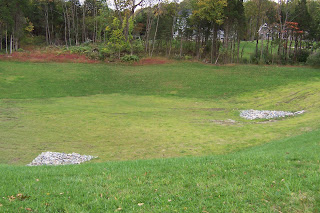Please Garden Responsibly. Because What You Spray in Your Garden Doesn’t Stay in Your Garden
 |
| American Lady caterpillar on licorice plant. Photo: Courtesy Missouri Botanical Garden |
As I reached for my organic insecticide, I thought, “Wait, you don’t know what kind of caterpillars these are!” I recalled an article on pest management by a friend who cautioned:
“Sometimes, the best treatment is no treatment at all.”
It took the better part of the afternoon for me to identify the miniature mowing machines. In the meantime, half of them had started dropping from their perches and wriggling off into the underbrush. I hoped I had made the right decision.
The licorice plant was devastated. But then I noticed that the caterpillars had not eaten the leaves all the way down to the stem. Possibly, secondary buds could sprout and still provide a silvery foil beneath my ‘Calypso’ geranium for the rest of the season.
It was an ugly few weeks, but eventually I saw tiny leaves emerging. With a little judicious pruning, no one would ever know what had happened.
There's a happy ending.
 |
| American Painted Lady butterfly. Photo: Courtesy of Floridata |
The moral to this story is that the long term rewards of sustainable gardening far outweigh any short term deviations from some imagined ideal: I didn’t have to kill anything, songbirds feasted on nutritious food, and the surviving butterflies went off to lay eggs to continue the circle of life. Caterpillars may represent the “ugly ducklings” of our gardens, but their butterflies delight us with their beauty and they both play a vital role in maintaining a healthy environment.
To Read More about beneficial insects and integrated pest management, browse the Sustainable Gardening Library Topics app:


